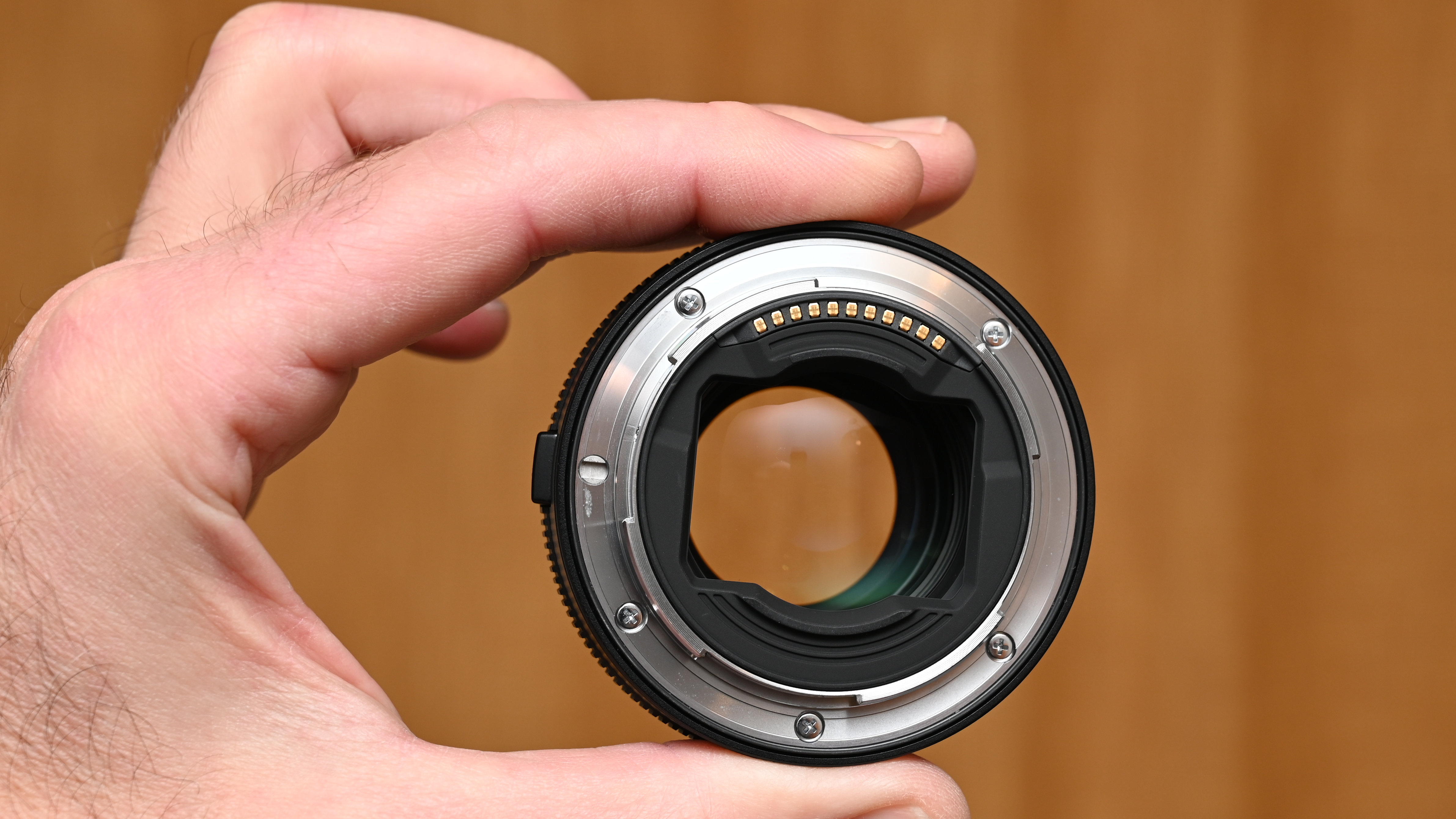Digital Camera World Verdict
Compatible with a wide range of Nikon Z-system telephoto prime and zoom lenses, this teleconverter delivers a 1.4x magnification in overall focal length. It’s beautifully engineered with a weather-sealed, anodized aluminum casing and high-quality glass, complete with coatings. Performance is exemplary and, while it’s pretty pricey for a 1.4x teleconverter, it’s worth every cent when your telephoto lens comes up short and won’t cover the distance.
Pros
- +
Excellent build quality
- +
Superb performance
- +
Adds telephoto reach
Cons
- -
Quite pricey for a teleconverter
- -
Typical 1 f/stop reduction in aperture
Why you can trust Digital Camera World
The Nikon Z Teleconverter TC-1.4x aims to bury a bad reputation. Historically, teleconverters have been somewhat notorious for degrading image quality and all-round performance. It’s literally like holding a magnifying glass to the image circle produced by a lens, and accentuating every slight flaw in its optical performance. The speed and accuracy of autofocus can also take a hit. However, as we reported previously, Nikon says its Z-mount teleconverters will not degrade image quality. The company also says you’ll ‘enjoy the focusing speed you’ve come to expect from Nikon Z’. As promised, we’ve now put those claims to the test, for the TC-1.4x as well as the TC-2.0x, the latter reviewed separately.
Specifications
Mount: Nikon Z
Full-frame: Yes
Lens construction: 6 elements in 4 groups
Angle of view: N/A
Diaphragm blades: N/A
Aperture reduction: 1 f/stop
Minimum focusing distance: Same as main lens
Maximum magnification ratio: 1.4x that of main lens
Filter size: N/A
Dimensions: 72x37mm (18.5mm from flange)
Weight: 220g
Key features
The key feature of this teleconverter is undoubtedly that it gives you a 1.4x boost in telephoto reach. Naturally that comes with the caveat that you also lose an f/stop in aperture brightness. For example, use it with a Z 70-200mm f/2.8 VR S lens and you’ll effectively get a 98-280mm zoom range with a constant f/4 aperture rating. That can definitely be a trade-off worth having when the main lens doesn’t cover the distance and you need a little extra reach.
It’s worth noting, however, that if you’re shooting with a full-frame Z-system camera, you can switch to DX crop mode and get a 1.5x magnification in telephoto reach with any lens, and without suffering any loss in aperture brightness. That’s particularly viable if you’re using a camera with a high megapixel count like the Z 7II, Z 8 and Z 9, all of which have 45 megapixel sensors. In this case, DX crop mode still gives you 19.5 megapixel images which might easily be large enough for most applications. Naturally though, a teleconverter enables use of the entire image sensor.
When it comes to compatibility, the TC-1.4x is very wide-ranging. As with other teleconverters, it protrudes into the rear of the main lens, so you can only use it with lenses that have enough clearance between the mounting plate and the rear element. Even so, the long list of compatible Z-system lenses so far includes the Z 70-180mm f/2.8, Z 70-200mm f/2.8 VR S, Z 100-400mm f/4.5-5.6 VR S, Z 180-600mm f/5.6-6.3 VR, Z 600mm f/6.3 VR S, Z 400mm f/2.8 TC VR S,and Z 800mm f/6.3 VR S. That’s pretty comprehensive!
Unlike some ‘dumb’ teleconverters that have no electronics, the TC-1.4x enables full data communication between the main lens and the camera body. That has a raft of benefits in itself, including the retention of autofocus, the ability to set the lens aperture from the camera, optical and in-camera image stabilization and the capture of lens-based EXIF data in image files.
The optical line-up is based on six elements within four groups and includes one aspherical element. Nikon’s Super Integrated Coating is also applied, to avoid degradation of clarity and to minimize ghosting and flare.
A key feature that’s not as obvious as the extension of focal length is that you also get a 1.4x boost in maximum magnification ratio. That’s because the minimum focus distance of the main lens remains unchanged when using the teleconverter, so you effectively get a 1.4x increase in macro magnification. For example, the Nikon Z 70-180mm f/2.8 has a native maximum macro power of 0.48x. Add the TC-1.4x and you’ll get 0.67x. That might not sound like much of a big deal but it certainly makes a big difference in practical terms, as you’ll see in our example shots.
Build and handling
The TC-1.4x is impeccably turned out. It has a black anodized aluminum casing and sturdy metal mounting plates forward and rear, and comes with a complete set of weather-seals. It’s nicely compact and lightweight as well, measuring 72x37mm and weighing 220g, so it’s easy to squeeze into a spare corner of your camera bag. In use, the length effectively shrinks from 37mm to just 18.5mm, as the protruding section of the teleconverter slots into the rear of the main lens.
The best camera deals, reviews, product advice, and unmissable photography news, direct to your inbox!
As well as weather-seals, the teleconverter has fluorine coatings on its front and rear elements, to repel moisture and grease, and to make the external surfaces of the outer elements easier to clean. The only moving part is the locking release lever, for removing the teleconverter from the main lens.
The TC-1.4x comes complete with a BF-N2 Teleconverter Cap (front), LF-N1 Lens Cap (rear), and CL-C4 Lens Case. The ‘lens case’ is effectively just a flimsy pouch but Nikon has gone to the trouble of printing a graphical warning on the front cap, highlighting the potential damage that can be done by trying to mount it on a camera the wrong way round, as the protruding section could collide with the camera’s image sensor. Nobody wants that!
Performance
We’ve been disappointed in the past when the image quality of a great lens has been let down by a teleconverter. That wasn’t our experience when using the TC-1.4x with a Z 70-200mm f/2.8 VR S. Throughout our real-world testing, levels of sharpness remained excellent, from one end of the zoom range to the other. There’s no visible increase in color fringing and pincushion distortion is actually reduced.
Optical image stabilization for VR (Vibration Reduction) lenses remains highly effective, and light metering is consistently accurate. We didn’t notice any real reduction in autofocus speed when using the TC-1.4x. Either way, the Z 70-200mm is a particularly fast-focusing lens, even by Z-system standards. We also used the teleconverter with a Z 70-180mm f/2.8 lens and shot some extreme close-ups, for which the image quality and all-round performance was similarly impressive.
The bottom line is that center-sharpness at wide apertures isn’t quite as outstanding when using the teleconverter, but edge-sharpness is actually better. In other respects, image quality is every bit as good as when using the main lens on its own.
Sample images
Lab results
We run a range of lab tests under controlled conditions, using the Imatest Master testing suite. Photos of test charts are taken across the range of apertures and zooms (where available), then analyzed for sharpness, distortion and chromatic aberrations.
We use Imatest SFR (spatial frequency response) charts and analysis software to plot lens resolution at the center of the image frame, corners and mid-point distances, across the range of aperture settings and, with zoom lenses, at four different focal lengths. The tests also measure distortion and color fringing (chromatic aberration).
Sharpness:
Naturally, at each comparative aperture, there’s a 1 f/stop difference between shooting with the main lens on its own and using the teleconverter, so the f/4 result is based on using the main lens at f/2.8. Either way, in our lab tests, center-sharpness proved slightly less outstanding at wide apertures than when using the main lens on its own. But it’s still of excellent levels, while sharpness towards the edges and corners of the frame are even better. Overall, the teleconverter retains excellent levels of sharpness.
Fringing:
There’s a very marginal increase in color fringing when using the teleconverter but it’s virtually impossible to see with the naked eye in real-world shooting, and automatic in-camera correction is available.
Distortion: 0.41
The pincushion distortion of our Z 70-200mm f/2.8 VR S test lens was significantly reduced when using the teleconverter. Again automatic in-camera correction is available but not needed.
Verdict
Compatible with a wide range of Nikon Z-system telephoto prime and zoom lenses, this teleconverter delivers a 1.4x magnification in overall focal length. It’s beautifully engineered with a weather-sealed, anodized aluminum casing and high-quality glass, complete with coatings. Performance is exemplary and, while it’s pretty pricey for a 1.4x teleconverter, it’s worth every cent when your telephoto lens comes up short and won’t cover the distance.
Read more:
• Best camera lenses to get
• Best Canon lenses
• Best Nikon lenses
• Best Sony lenses
Matthew Richards is a photographer and journalist who has spent years using and reviewing all manner of photo gear. He is Digital Camera World's principal lens reviewer – and has tested more primes and zooms than most people have had hot dinners!
His expertise with equipment doesn’t end there, though. He is also an encyclopedia when it comes to all manner of cameras, camera holsters and bags, flashguns, tripods and heads, printers, papers and inks, and just about anything imaging-related.
In an earlier life he was a broadcast engineer at the BBC, as well as a former editor of PC Guide.






















